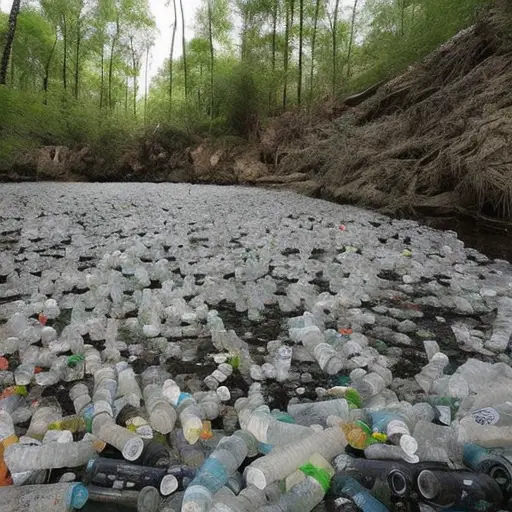Maintaining the Natural Beauty of Wilderness Campsites

In the heart of the wilderness, where nature’s beauty thrives, lies a delicate balance that must be upheld. Maintaining the natural beauty of wilderness campsites is not just a responsibility, but a commitment to preserving the very essence of these pristine environments.
As stewards of the land, we must embrace Leave No Trace principles, minimize campsite impact, practice proper waste management, protect wildlife and plant life, adopt responsible campfire practices, and educate others on wilderness preservation.
Together, we can ensure the longevity of these breathtaking sanctuaries.
Leave No Trace Principles
The Leave No Trace principles are essential guidelines for preserving the natural beauty of wilderness campsites. These principles promote ethical hiking and outdoor ethics, ensuring that we can enjoy the wilderness while minimizing our impact on the environment.
The first principle is to plan ahead and prepare. This involves researching the area, understanding the regulations, and being prepared for any potential challenges. By doing so, we can minimize the need for resource-intensive activities like cutting down trees for firewood or excessive waste generation.
The second principle is to travel and camp on durable surfaces. This means staying on designated trails and campsites to avoid damaging fragile ecosystems. By sticking to established paths, we can prevent erosion and preserve the natural beauty of the landscape.
Next, we have the principle of disposing of waste properly. This includes packing out all trash, including food scraps and hygiene products. Leaving behind even biodegradable waste can disrupt the natural ecosystem and attract wildlife, leading to potential conflicts.
The fourth principle is to leave what you find. This means not disturbing or taking anything from the environment, whether it’s a plant, rock, or artifact. By leaving these natural treasures untouched, we ensure that future generations can enjoy them as well.
Lastly, we have the principle of minimizing campfire impacts. While campfires can be enjoyable, they can also cause damage to the environment. It is important to use established fire rings, only burn small quantities of wood, and fully extinguish the fire before leaving.
Minimizing Campsite Impact
When it comes to minimizing campsite impact, adhering to the principles of Leave No Trace is essential.
These principles include properly disposing of waste, such as by burying human waste in a cat hole or packing out trash, to prevent contamination and preserve the natural environment.
Additionally, respecting wildlife habitats by keeping a safe distance and not disturbing their natural behaviors is crucial for maintaining the integrity of wilderness campsites.
Leave No Trace
Effective campsite management involves minimizing the impact on the environment through the practice of Leave No Trace principles. Ethical camping and sustainable outdoors are essential aspects of Leave No Trace. Here are four key strategies for minimizing campsite impact:
-
Plan Ahead and Prepare: Before heading into the wilderness, research the area and obtain any necessary permits. This ensures that you are aware of any regulations or restrictions in place and can properly prepare for your trip.
-
Dispose of Waste Properly: Carry out all trash and waste, including human waste. Use designated toilets or bury waste at least 200 feet away from water sources. This helps to prevent contamination and maintain the natural beauty of the campsite.
-
Leave What You Find: Preserve the natural environment by leaving rocks, plants, and other natural objects as you found them. Avoid damaging vegetation and disturbing wildlife habitats.
-
Minimize Campfire Impact: Use established fire rings or portable stoves for cooking. Keep fires small and only burn dead and downed wood. When extinguishing the fire, ensure it is completely out and scatter the cool ashes.
Proper Waste Disposal
One important aspect of minimizing campsite impact is proper waste disposal. When camping in wilderness areas, it is crucial to have a system in place for managing waste responsibly.
One effective solution is the use of composting toilets. These toilets are designed to break down human waste into compost, which can be safely returned to the environment. Composting toilets are odorless and require little maintenance, making them an ideal option for wilderness campsites.
Additionally, using biodegradable packaging for food and other supplies can greatly reduce the amount of waste generated. Biodegradable packaging is designed to break down naturally over time, minimizing its impact on the environment.
Respect Wildlife Habitats
Respecting wildlife habitats is essential for minimizing the impact on wilderness campsites, ensuring the natural beauty remains intact. To achieve this goal, campers should adopt sustainable camping practices that prioritize wildlife conservation.
Here are four ways to respect wildlife habitats while enjoying the wilderness:
-
Keep a safe distance: It is important to observe wildlife from a distance to avoid disturbing their natural behavior. This means refraining from feeding, touching, or approaching animals.
-
Stay on designated trails: By sticking to established trails, you can minimize your impact on wildlife habitats and prevent damage to sensitive ecosystems.
-
Avoid loud noises: Excessive noise can disrupt wildlife and cause unnecessary stress. Keep noise levels down and respect the natural serenity of the environment.
-
Properly store food and garbage: Ensure that food and garbage are stored securely to prevent attracting wildlife to your campsite. This helps maintain their natural foraging behavior and reduces the risk of wildlife conflicts.
Proper Waste Management
The proper management of waste is crucial in maintaining the natural beauty of wilderness campsites. One of the key aspects of waste management is waste reduction. Campers should aim to minimize the amount of waste generated during their stay. This can be achieved by packing reusable containers and utensils, and avoiding single-use items such as disposable water bottles and plastic bags. By adopting these practices, campers can significantly reduce the amount of waste that needs to be managed.
Another effective waste management solution is the use of composting toilets. These toilets are designed to efficiently break down human waste and turn it into compost. Unlike traditional flush toilets, composting toilets do not require water, making them ideal for remote wilderness campsites where water supply may be limited. Additionally, composting toilets eliminate the need for sewage systems and reduce the risk of water pollution.
To further enhance waste management at wilderness campsites, campers should be encouraged to separate their waste into different categories, such as recyclables, organic waste, and non-recyclables. Providing clearly labeled recycling bins and composting areas can help campers easily identify where to dispose of their waste. Regular waste collection and proper disposal should also be implemented to prevent overflowing bins and littering.
Protecting Wildlife and Plant Life
Preserving the biodiversity of wilderness campsites is essential in maintaining their natural beauty. Protecting wildlife and plant life is a crucial aspect of sustainable camping practices. By implementing responsible actions, campers can contribute to wildlife conservation and ensure the long-term health of the ecosystem.
Here are some strategies to protect wildlife and plant life in wilderness campsites:
-
Minimize disturbance: Avoid venturing off designated trails or disturbing wildlife habitats. This helps maintain the natural balance and prevents unnecessary stress on animal populations.
-
Proper waste disposal: Dispose of all waste properly, including food scraps, to prevent attracting wildlife to campgrounds. This reduces the risk of human-wildlife conflicts and protects the natural behaviors of animals.
-
Leave no trace: Practice Leave No Trace principles, such as packing out all trash, so that the campsite remains undisturbed and wildlife can thrive in their natural habitat.
-
Respect plant life: Refrain from picking or damaging plants. Some species may be rare or endangered, and disturbing them can have long-lasting negative effects on the ecosystem.
Responsible Campfire Practices
To ensure the safety of wilderness campsites and minimize the risk of wildfires, campers must adhere to responsible campfire practices.
Fire safety should always be the top priority when starting and maintaining a campfire. First and foremost, campers should choose a safe location for the fire, away from any overhanging branches or vegetation that could easily catch fire. Clearing the area around the fire pit of any debris is also important to prevent accidental sparks from igniting nearby materials. Additionally, it is crucial to have a source of water nearby, such as a bucket or a hose, to quickly extinguish the fire if necessary.
Another aspect of responsible campfire practices is sustainable firewood sourcing. Campers should only use firewood that has been obtained legally and sustainably. It is essential to check local regulations and guidelines regarding firewood collection in the area. In many wilderness areas, it is prohibited to gather firewood from the surrounding forest, as it disrupts the natural ecosystem. Instead, campers should purchase firewood from authorized vendors or use fallen branches and deadwood found on the ground.
Educating Others on Wilderness Preservation
One effective way to promote wilderness preservation is by educating others about its importance. By increasing wilderness awareness and fostering a sense of environmental stewardship, individuals can become advocates for the protection and conservation of these pristine natural spaces.
Here are four key ways to educate others on wilderness preservation:
-
Conduct workshops and seminars: Organize informative sessions where experts can discuss the significance of wilderness areas, the threats they face, and the actions individuals can take to protect them. These workshops can cover topics such as Leave No Trace principles, responsible outdoor practices, and the benefits of wilderness conservation.
-
Develop educational materials: Create brochures, pamphlets, and online resources that provide information about wilderness preservation. These materials can highlight the ecological value of wilderness areas, showcase success stories of conservation efforts, and offer practical tips for minimizing human impact on these fragile ecosystems.
-
Collaborate with schools and youth organizations: Engaging young people in wilderness preservation is crucial for building a sustainable future. Partner with schools and youth organizations to develop educational programs that teach children about the importance of wilderness, instill a sense of environmental responsibility, and encourage outdoor exploration.
-
Utilize social media and online platforms: Leverage the power of social media and online platforms to disseminate information and raise awareness about wilderness preservation. Share educational articles, stunning photographs, and inspiring stories that showcase the beauty and fragility of wilderness areas. Encourage discussions and engage with followers to foster a community of conservation-minded individuals.
Frequently Asked Questions
How Can I Prevent Erosion at My Campsite?
Effective erosion prevention measures are crucial for campsite sustainability. Implementing strategies such as contouring the land, using erosion control blankets, and planting native vegetation can help reduce soil erosion and maintain the natural beauty of wilderness campsites.
What Steps Can I Take to Minimize Noise Pollution in the Wilderness?
To minimize noise pollution in the wilderness, implement noise reduction techniques such as using quieter equipment and setting up quiet hours. This will help to preserve the natural serenity and beauty of the campsite environment.
Are There Any Specific Guidelines for Choosing a Campsite Location to Avoid Disturbing Wildlife Habitats?
When choosing a campsite location, it is important to consider the impact on wildlife habitats. Guidelines for minimizing disturbance to wildlife include avoiding sensitive areas, staying on designated paths, and minimizing noise and human presence.
How Can I Ensure That My Campfire Does Not Spread and Cause a Wildfire?
How can campfire safety be ensured to prevent the spread of wildfires? By following proper guidelines, such as choosing a suitable site, clearing surrounding vegetation, using fire rings or pits, and properly extinguishing the fire before leaving.
What Are Some Effective Ways to Educate Others About the Importance of Wilderness Preservation and Leave No Trace Principles?
Educational materials and community workshops are effective ways to educate others about the importance of wilderness preservation and leave no trace principles. These initiatives raise awareness and provide practical knowledge for minimizing human impact on wilderness areas.
Conclusion
In conclusion, maintaining the natural beauty of wilderness campsites requires adherence to Leave No Trace principles. This includes minimizing campsite impact, proper waste management, protecting wildlife and plant life, and responsible campfire practices.
By educating others on wilderness preservation, we can ensure the longevity of these precious environments. Just as a delicate flower needs nurturing and protection to thrive, so too does our wilderness need our care and attention to preserve its beauty for future generations.



